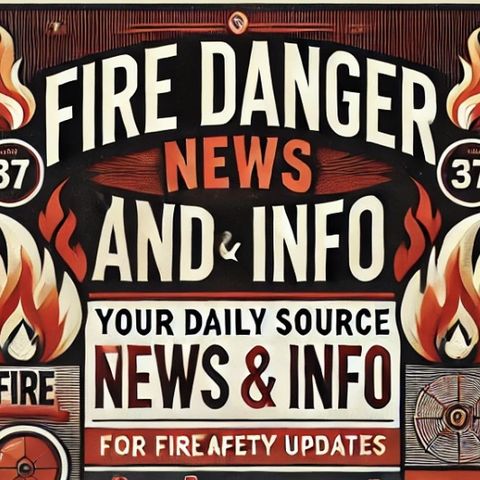Combating Wildfires: How USGS Wildland Fire Science Drives Effective Fire Management Strategies

Scarica e ascolta ovunque
Scarica i tuoi episodi preferiti e goditi l'ascolto, ovunque tu sia! Iscriviti o accedi ora per ascoltare offline.
Combating Wildfires: How USGS Wildland Fire Science Drives Effective Fire Management Strategies
Questa è una trascrizione generata automaticamente. Si prega di notare che non è garantita la completa accuratezza.
Descrizione
Understanding and mitigating wildfires have become an urgent priority as the frequency and intensity of these disasters increase in the western United States. As the environmental and economic impacts of...
mostra di piùThe USGS Wildland Fire Science program plays an essential role in understanding the complex dynamics of wildfires through cutting-edge research. By investigating fire behavior, ignition causes, and atmospheric interactions, scientists are uncovering predictive patterns that can help anticipate fire events and their pathways. This comprehensive approach allows for more strategic deployment of firefighting resources and enhances safety measures for both firefighters and communities at risk.
Key advances in fire science include the use of satellite technology and remote sensing to monitor fire-prone areas continuously. These technologies provide real-time data on variables such as vegetation moisture levels and fuel abundance, which are critical for predicting fire behavior. Moreover, satellites equipped with thermal imaging can detect fire outbreaks early, allowing for quicker response times that can prevent small fires from escalating into catastrophic events.
The program also focuses on post-fire landscape recovery, analyzing how ecosystems respond to fire and identifying factors that influence regeneration. This research informs rehabilitation efforts, guiding interventions that restore ecological balance and reduce susceptibility to future fires. By understanding which species and habitats are most resilient, land managers can prioritize resources efficiently to support recovery efforts.
Additionally, USGS scientists collaborate with local, state, and federal agencies, providing them with the latest wildfire science data and tools. By fostering these partnerships, the program ensures that scientific discoveries are translated into actionable strategies on the ground. Collaborative efforts also extend to educational outreach, where communities are engaged in fire prevention and preparedness, reducing human-induced fire risks.
Climate change adds another layer of complexity to wildfire management as it exacerbates conditions that lead to more frequent and severe fires. The work of the USGS is crucial in modeling how climate variations influence fire patterns and in developing adaptive management strategies that are resilient to climatic shifts.
The USGS Wildland Fire Science program is an indispensable asset in the fight against wildfires in the western United States. By integrating advanced research, technology, and collaboration, this initiative is paving the way for more effective fire management and community safety. For those interested in exploring the detailed contributions of USGS science toward wildfire mitigation, visiting the USGS Wildland Fire Science webpage offers insights into how this research is making a tangible difference across wildfire-prone regions.
Informazioni
| Autore | QP-4 |
| Organizzazione | William Corbin |
| Sito | - |
| Tag |
Copyright 2024 - Spreaker Inc. an iHeartMedia Company

Commenti